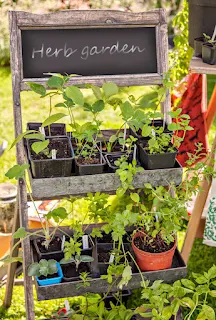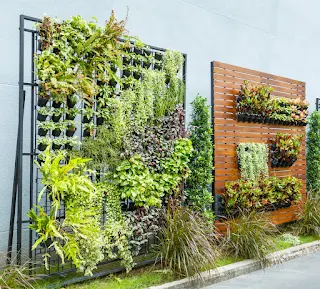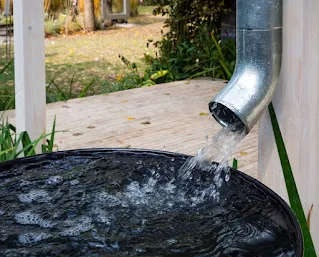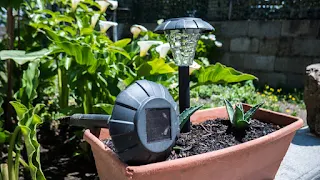Container Gardening
Container gardening is a method of growing plants in various types of containers, such as pots, planters, or repurposed items, instead of planting them directly in the ground. This approach is ideal for people with limited outdoor space, like those living in apartments or urban areas with small balconies, patios, or rooftop gardens. Container gardening allows for greater control over soil quality, water usage, and plant placement. It can accommodate a wide variety of plants, including flowers, herbs, and small vegetables, making it a versatile option for cultivating plants in constrained spaces. To create an eco-friendly container garden, consider the following key aspects:
- Choose recycled or eco-friendly containers with proper drainage holes.
- Use high-quality, well-draining soil mixed with organic matter, and add fertilizers as needed.
- Monitor soil moisture and water regularly, adjusting your schedule based on plant needs.
- Select plants well-suited for container growing, considering sunlight requirements, mature size, and growth habits.
- Maintain your garden by checking for pests or diseases, pruning, and providing proper support for climbing plants.
Vertical Gardening:
Vertical gardening is an innovative solution for urban gardens, where space is often limited. It makes the most of vertical surfaces to grow plants, transforming balconies, patios, and even walls into lush, green spaces. This technique not only saves space but also adds visual interest and contributes to a healthier urban environment.To create an urban vertical garden, start by selecting suitable structures such as trellises, wall-mounted planters, or shelves made from sustainable materials. These structures support climbing plants, hold potted plants, and maximize your available growing area.
Choose plants that thrive in vertical environments, considering factors such as size, sunlight requirements, and growth habits. Climbing plants like ivy, clematis, and beans can be trained to grow on trellises, while smaller plants like herbs, ferns, and succulents can be placed in wall-mounted planters or hanging baskets.
Design your vertical garden thoughtfully, creating a visually appealing display by mixing colors, textures, and plant types. Ensure that plants receive appropriate sunlight and airflow to promote healthy growth. Vertical gardens can also serve as privacy screens or green walls, enhancing the ambiance of urban living spaces.
Maintain your urban vertical garden with regular care, including watering, pruning, and monitoring for pests or diseases. Since vertical gardens can dry out more quickly than traditional gardens, ensure adequate water supply and check structural stability periodically.
Maximize your vertical space by installing trellises, wall-mounted planters, or shelves made from sustainable materials to grow climbing plants or display a collection of potted plants. This technique can create visual interest and make the most of limited space.
Permeable Patios:
Create a small permeable patio with permeable pavers or gravel to provide a functional and attractive outdoor seating area. This helps reduce stormwater runoff and allows for better water management, while still incorporating greenery with container plants or vertical garden features.
Native Plant Garden:
A native plant garden is an excellent choice for compact urban gardens, offering several benefits that make it well-suited for such spaces:
- Space efficiency: Native plants, especially smaller varieties or groundcovers, can be chosen specifically to suit the scale of a compact urban garden. They can be arranged creatively in small beds, containers, or even vertical gardens, maximizing the available space.
- Low maintenance: In an urban setting, maintaining a garden can be challenging due to time constraints and limited access to resources. Native plants typically require less maintenance, as they are adapted to local conditions, reducing the need for frequent watering, fertilizing, and pest control.
- Adaptability: Native plants are well-suited to the local climate and soil conditions, making them more resilient to fluctuations in temperature, rainfall, or other environmental factors common in urban settings.
- Ecological benefits: Even in compact urban gardens, native plants can create valuable habitats for local wildlife, such as pollinators and birds. They contribute to urban biodiversity, supporting ecosystem services like pollination and pest control, which are essential for maintaining healthy, vibrant green spaces.
- Aesthetic appeal: Native plants can add visual interest and a sense of place to an urban garden, reflecting the natural heritage of the region. They offer a diverse range of colors, textures, and forms, making it easy to create an attractive and cohesive garden design.
Multi-functional Furniture:
Multi-functional furniture can be a practical and space-saving solution for urban gardens, as it combines various functions in a single piece, maximizing the utility of limited space. By investing in sustainable materials, you also contribute to a more environmentally friendly garden. Here are some ideas for multi-functional furniture in urban gardens:
- Bench planters: These are benches with built-in planters at each end or along the seating area, allowing you to grow plants while providing seating. This combination of seating and greenery creates a cozy and inviting atmosphere.
- Storage seating: Choose outdoor furniture with built-in storage compartments, such as benches or ottomans with lift-up seats. These can be used to store gardening tools, cushions, or other outdoor items, keeping your garden organized and clutter-free.
- Table gardens: Consider tables with built-in planting areas or removable panels that reveal hidden planting beds. This allows you to grow plants, herbs, or even small vegetables right at your dining or coffee table, blending functionality with aesthetics.
Rainwater Harvesting:
Rainwater harvesting is a sustainable and eco-friendly method of collecting and storing rainwater for use in your urban garden, which can help conserve water resources and reduce reliance on municipal water supplies.
- Rain barrels: Installing a rain barrel beneath a downspout allows you to collect rainwater from your roof during rainfall. These barrels come in various sizes and designs, and often include a spigot for easy access to the stored water. Rain barrels can be connected to hoses or watering cans, allowing you to water your garden with the collected rainwater.
- Rain chains: Rain chains are decorative alternatives to downspouts that guide water from your roof to a collection point, such as a rain barrel or a garden bed. They create a visually appealing waterfall effect and can help control the flow of rainwater, preventing soil erosion or water damage.
Solar-powered Lighting and Water Features:
Incorporating solar-powered lighting and water features into your urban garden is an eco-friendly and energy-efficient way to enhance your outdoor space while reducing your environmental footprint. Here's more about these sustainable additions:- Solar-powered lighting: Solar lights use photovoltaic cells to convert sunlight into electricity, which is stored in rechargeable batteries during the day and powers the lights at night. They come in various styles, such as pathway lights, string lights, and spotlights, allowing you to illuminate your garden without relying on grid electricity. Solar lighting is easy to install, low-maintenance, and cost-effective over time, as it eliminates the need for external power sources and reduces energy bills.
- Solar-powered water features: Solar water features, such as fountains, birdbaths, or waterfalls, use solar panels to power the water pumps. These features can be standalone units with built-in solar panels or connected to external panels placed in a sunny location. Solar-powered water features add visual and auditory interest to your garden while promoting a relaxing atmosphere. They also help circulate water, reducing mosquito breeding and improving water quality for plants and wildlife.




No comments:
Post a Comment